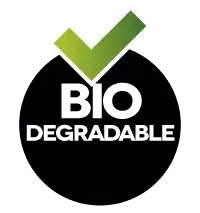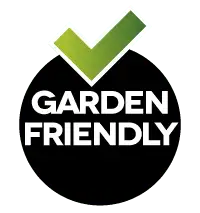
Eco-Friendly De-Icer for Sale Non-Toxic Ice Melt for Driveways & Walkways
Looking for an eco friendly de-icer that actually works? Discover EcoGrit’s non-toxic, pet- and plant-safe ice melt – perfect for UK driveways and walkways.
In times past, it was a common sight to see people using rock salt to clear frozen paths, driveways, car windscreens and more. The salt worked by raising the temperature of the frozen ice or snow so that it melted and turned back into water. But there are lots of disadvantages to de-icing with rock salts. The salt stayed in the water and ran off into nearby groundwater and ecosystems and caused several problems for the people, animals and vehicles that come into contact with it.
Rock salt is a mineral formed from sodium chloride. It can pose hazards to people, pets and property due to its corrosive nature. The more rock salt that is used for winter de-icing, the more dangerous it can become. There are safer alternatives available for getting rid of frost, ice and snow, such as EcoGrit’s range of salt-free de-icers which work down to temperatures of minus 20 degrees C. Here are some more disadvantages of de-icing with rock salts on frozen wintry surfaces.
One of the major disadvantages of de-icing with rock salts is the risk of injury and harm to humans. Rock salt can damage internal organs if too much is accidentally ingested. Problems could include damage to the kidneys, respiratory system and digestive system. It can also cause redness and rashes on the skin, drooling, vomiting and stomach aches. If rock salt has entered the water supply, this can also lead to medical issues around excess consumption of salt. Consult a medical professional if you are worried about any aspect of rock salt and your health. Keep rock salt out of the way of children, especially – watch out for treated areas and avoid them when going out to play in the snow.
As well as risks to human health, rock salt can cause problems for animals. Pets that walk on treated areas can find salt particles trapped in their paws, which can lead to irritation, pain and rashes on the skin. Look out for cats or dogs attempting to drink out of salt-treated puddles as this can lead to vomiting, digestive issues and salt poisoning if they ingest too much.

As well as domestic animals, rock salt can harm the local wildlife. Small animals, birds, plants and fish can all be affected by rock salt entering their ecosystem and habitats. Salt that remains in melted water can get into groundwater and alter the chemistry of the soil. This can lead to plants failing to thrive and bulbs not reappearing after being dormant. Choosing a rock-salt-free to melt snow and ice can make all the difference to maintaining healthy, thriving plants and wildlife in the local area.
Fish, frogs and other amphibious creatures can also find their ponds, rivers and lakes adversely altered by sodium chloride that has flowed into them from a patch of treated snow or ice. The salt changes the chemistry of the water. This can make it hostile to supporting life, which has effects all the way along the food chain. If rock salt enters the drinking water supply, this can also lead to problems with human health and wellbeing.
Getting rid of ice on the roads is vital to enable cars and other vehicles to drive safely without slipping or skidding. However, applying rock salt to melt the ice on slippery surfaces adds dangers of a different kind. The corrosive chemical can damage the undersides of cars, vans, lorries and motorcycles, which can compromise their performance. It can also damage tyres and hurt paintwork, leading to more frequent repair and maintenance costs during the winter. This is one of the disadvantages of de-icing with rock salts that could end up costing vehicle owners a fortune.
Roads, driveways and pavements treated with rock salt can become more prone to cracks, potholes and other damage due to its corrosive nature. Water can get into the cracks, freeze over and cause even greater damage. The same goes for brickwork, walls and railings. Other places where this can be a problem include car parks, school playgrounds, outside sports grounds and farmyards. Take care to inspect exterior surfaces for damage and use a salt-free de-icer wherever possible to protect them.

Although we think about outdoor surfaces needing to be de-iced in the winter, using rock salt can harm inside areas too. People can walk it in on the bottoms of their shoes, leading the salt to damage carpets, rugs and soft furnishings. It is corrosive and can cause burns and unsightly damage. If people put bags down on treated surfaces, these can become damaged too, as can the soles of shoes and boots that come into direct contact with any rock salt residue left on the ground. Clean these thoroughly after going outside.
EcoGrit
The Saw Mill
Brooms Barn
Coney Weston
IP31 1HQ

Looking for an eco friendly de-icer that actually works? Discover EcoGrit’s non-toxic, pet- and plant-safe ice melt – perfect for UK driveways and walkways.
Discover how to stay ahead of winter weather with EcoGrit’s expert guidance on de-icing. Learn about our legal responsibilities and how you can keep your






EcoGrit is an environmentally conscious company that would like to serve the people by offering them education, insight, “peace of mind” and the chance to make a positive difference on a monumental scale at a time when winter weather patterns are becoming more unpredictable.
VAT (Value Added Tax) Number: 340 3662 26
Looking for an eco friendly de-icer that actually works? Discover EcoGrit’s non-toxic, pet- and plant-safe ice melt – perfect for UK driveways and walkways.
© 2023 EcoGrit Ltd